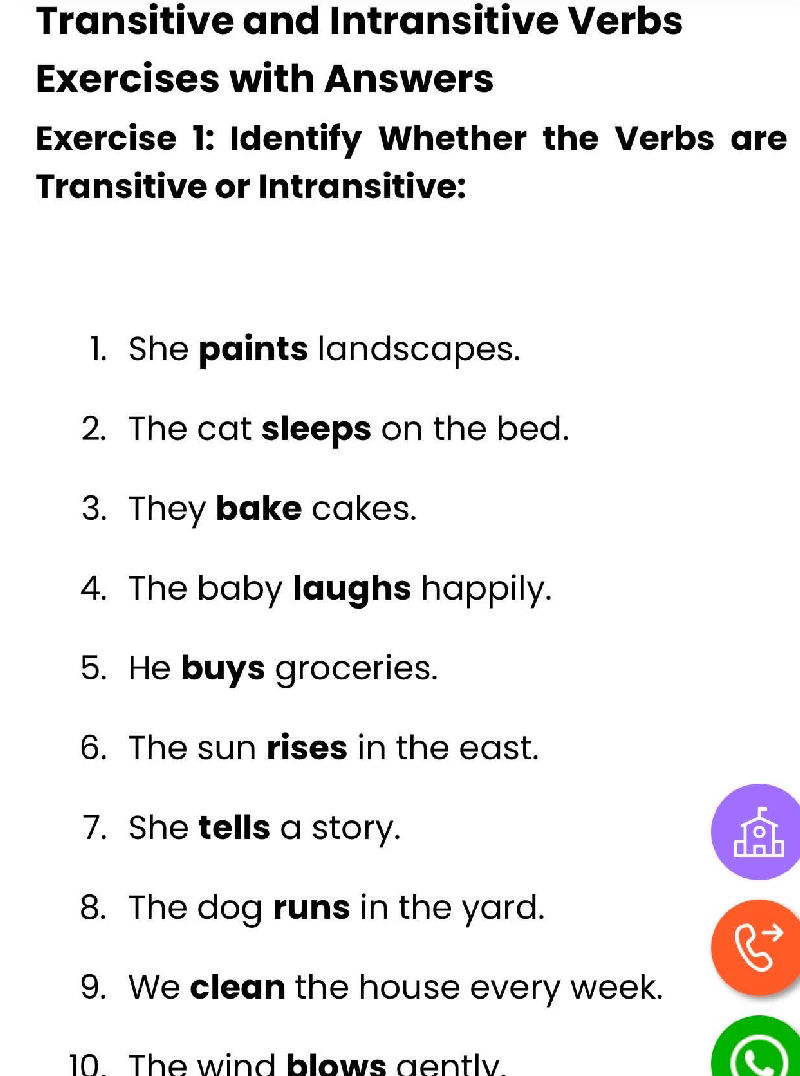Verbs are an essential part of any sentence, as they express actions or states of being. In English, verbs can be classified as transitive or intransitive, depending on whether they require an object to complete their meaning. Understanding the difference between these two types of verbs is crucial for constructing clear and coherent sentences.
Transitive verbs are action verbs that require a direct object to complete their meaning. For example, in the sentence “She ate the apple,” the verb “ate” is transitive because it needs the direct object “apple” to make sense. On the other hand, intransitive verbs do not require a direct object to complete their meaning. For example, in the sentence “He sleeps,” the verb “sleeps” is intransitive because it does not need an object.
Transitive vs Intransitive Verbs Worksheet
Below is a worksheet to help you practice identifying transitive and intransitive verbs in sentences:
Worksheet:
- She sang a song.
- The bird flew.
- They laughed loudly.
- He wrote a letter.
- The sun sets.
Now, let’s analyze each sentence to determine whether the verb is transitive or intransitive:
1. “She sang a song.”
– Transitive verb: sang
– Direct object: a song
This sentence contains a transitive verb.
2. “The bird flew.”
– Intransitive verb: flew
This sentence contains an intransitive verb.
3. “They laughed loudly.”
– Intransitive verb: laughed
This sentence contains an intransitive verb.
4. “He wrote a letter.”
– Transitive verb: wrote
– Direct object: a letter
This sentence contains a transitive verb.
5. “The sun sets.”
– Intransitive verb: sets
This sentence contains an intransitive verb.
Understanding the difference between transitive and intransitive verbs is essential for building strong sentences. By practicing with worksheets like the one above, you can improve your grasp of these concepts and enhance your writing skills.
